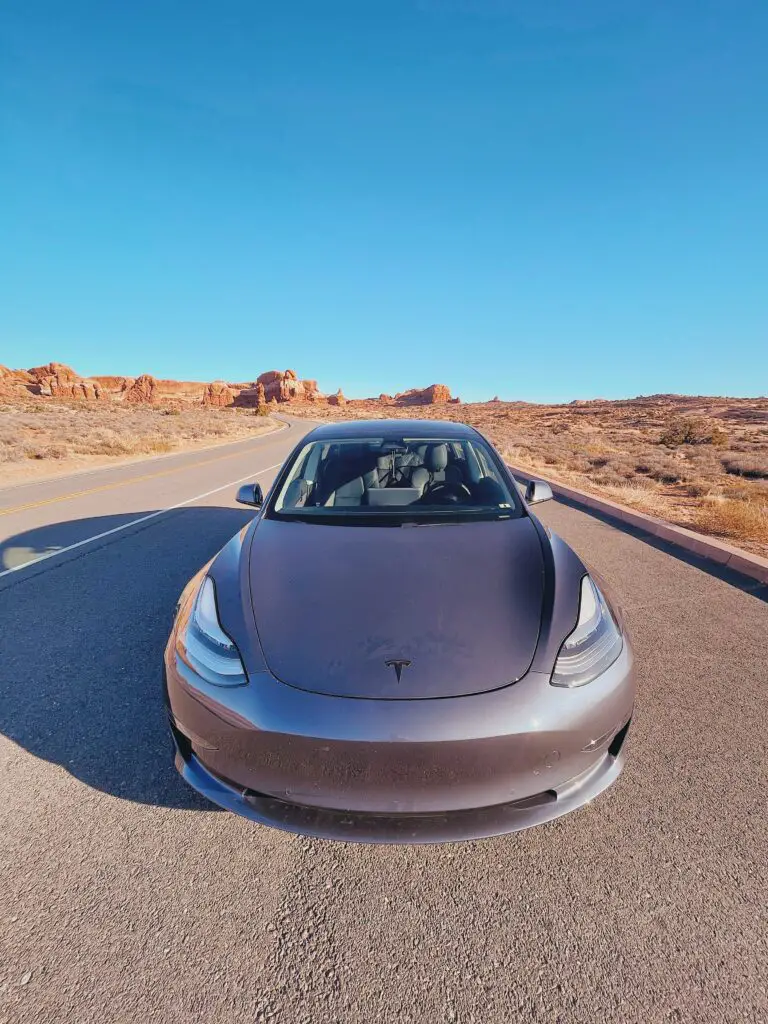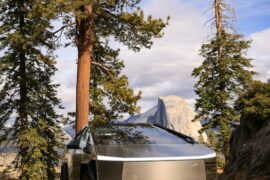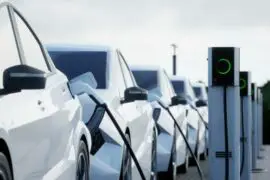The automotive landscape is transforming remarkably as electric vehicles (EVs) surge in popularity, reshaping our notions of transportation and sustainability. With their innovative technology and eco-friendly features, EVs are steering us into a new era of driving. Tesla, a trailblazing manufacturer synonymous with cutting-edge electric vehicles, is at the forefront of this revolution. Amidst EVs’ enthusiasm, a pertinent question arises: Do Teslas need oil changes?
In this article, we delve into the distinctive maintenance landscape of electric vehicles, illuminating the intriguing contrasts between Teslas and their traditional gasoline-powered counterparts. As we journey through the mechanics and upkeep of these modern marvels, we uncover the captivating truth about whether Teslas require the conventional oil changes that have been a hallmark of automotive care for decades.
Contents
Understanding the Mechanics of Electric Vehicles
Electric vehicles (EVs) operate on a fundamentally different principle compared to their conventional gasoline-powered counterparts. At the heart of this distinction is the absence of an internal combustion engine (ICE), the quintessential powerplant of traditional vehicles. In an EV, the internal combustion process is replaced by a dynamic interplay of electric components, giving rise to a silent yet powerful driving experience.

Unlike traditional vehicles that rely on a complex network of moving parts fueled by gasoline, EVs harness the might of electricity stored in advanced lithium-ion battery packs. These batteries serve as the energy source that propels the vehicle forward, converting electrical energy into mechanical motion with impressive efficiency.
One of the remarkable hallmarks of EVs is the absence of traditional components synonymous with vehicle operation for over a century. Gone are the days of regular oil changes, as EVs like Teslas bid farewell to the need for lubricating fluids that keep internal combustion engines running smoothly. Similarly, the intricate transmission systems found in conventional vehicles have become obsolete in the electric realm. EVs boast a single-speed transmission, streamlining the driving experience and minimizing complex maintenance needs.
The Role of Oil Changes in Traditional Vehicles
In traditional vehicles powered by internal combustion engines (ICE), the ritual of regular oil changes is crucial in maintaining optimal performance and longevity. Understanding the significance of this maintenance practice unveils the intricate symbiosis between oil and the intricate web of components within an ICE.
Recognizing the demanding environment in which internal combustion engines operate is essential to comprehend the need for oil changes. These engines consist of numerous moving parts, each engaged in a meticulously choreographed dance of power generation. As these components move, friction inevitably ensues, generating heat and potentially leading to wear and tear.
Enter motor oil, the unsung hero that mitigates these effects. Motor oil is a multifaceted guardian, meticulously lubricating the engine’s moving parts. Its fluidic embrace forms a protective barrier, reducing friction and minimizing wear between metal surfaces. This vital function ensures smoother operation and extends the engine’s lifespan.
Maintenance Differences: Teslas vs. Conventional Cars
As the automotive landscape evolves, the maintenance disparities between electric vehicles (EVs) like Teslas and their conventional gasoline-powered counterparts become increasingly apparent. These differences stem from the distinctive engineering philosophies that underpin these two classes of vehicles, revolutionizing the way we approach automotive upkeep.
A primary reason Teslas stands apart in the realm of maintenance is the conspicuous absence of a conventional internal combustion engine (ICE). Unlike traditional vehicles reliant on oil for lubrication and cooling, Teslas harness the power of electricity to drive their performance. The absence of an engine block answers the question: Teslas do not require oil changes. This fundamental departure from the longstanding practice marks a paradigm shift in automotive maintenance.
A striking feature that distinguishes EVs like Teslas is the reduction in the complexity of moving parts. Internal combustion engines are replete with intricate components that necessitate meticulous care. In contrast, Teslas embodies a streamlined elegance, boasting significantly fewer moving parts. This inherent simplicity translates into a maintenance experience marked by reduced intricacy and fewer opportunities for wear and tear. With fewer components prone to friction and heat, the need for elaborate maintenance routines diminishes, offering Tesla owners a straightforward maintenance journey.
The sweeping changes introduced by Teslas and other EVs illuminate a future where maintenance becomes a harmonious symphony of innovative engineering and minimalistic elegance. As traditional vehicles and their oil-based rituals slowly fade into the rearview, Teslas emerge as a herald of the maintenance landscape yet to come, defined by efficiency, ingenuity, and a resounding departure from the conventions of the past.
Essential Maintenance for Teslas
While the absence of oil changes distinguishes Teslas from conventional vehicles, it’s important to note that these innovative electric cars are not entirely maintenance-free. Like any complex machine, Teslas require regular care to ensure peak performance and longevity. Let’s explore the key aspects of essential maintenance for these groundbreaking electric vehicles.
1. Routine Upkeep: Teslas may not rely on oil changes, but routine maintenance remains essential to keep them operating at their best. Regular inspections and servicing contribute to early issue detection and prevention, preserving the overall health of your vehicle.
2. Battery Health and Charging Habits: The heart of any electric vehicle is its battery, and maintaining its health is paramount. Monitoring and managing your charging habits can significantly impact the longevity of your Tesla battery. Over time, batteries may experience a decrease in capacity, but proper charging practices, such as avoiding frequent full charges and extreme temperature conditions, can help mitigate this effect.
3. Brakes: While Teslas feature regenerative braking that reduces wear on traditional friction brakes, it’s important to periodically check brake pads, rotors, and fluid levels to ensure optimal braking performance and safety.
4. Tires: Regularly inspecting tire tread depth, wear patterns, and inflation levels is crucial for safety and energy efficiency. Properly maintained tires contribute to better handling and range.

5. Suspension: like all vehicles, Teslas rely on a well-maintained suspension system for comfort and control. Routine checks and adjustments to components such as shocks, struts, and control arms are vital for a smooth and stable ride.
6. HVAC Systems: The Heating, Ventilation, and Air Conditioning (HVAC) system plays a role in passenger comfort and defogging. Regularly inspecting and maintaining filters, fans, and refrigerant levels ensure efficient climate control and air quality.
Tesla’s Recommended Maintenance Schedule
Tesla, a pioneer in electric vehicles, has crafted a distinct maintenance regimen that aligns with the unique mechanics of its innovative creations. While Teslas diverge from the conventional need for oil changes, their upkeep still follows a structured approach designed to ensure optimal performance and longevity. Let’s delve into Tesla’s official maintenance recommendations and the intervals for specific tasks that uphold the prowess of these cutting-edge electric vehicles.
Regular Inspections and Maintenance:
Tesla recommends regular maintenance inspections to ensure your vehicle operates at its best. While the frequency of these inspections may vary based on usage and environmental factors, Tesla suggests an annual inspection for a comprehensive review of your vehicle’s systems.
Tire Rotation:
Tire rotation is crucial to maintaining even tire wear and maximizing tire lifespan. Tesla advises rotating tires every 10,000 to 12,000 miles or as needed based on wear patterns. This practice contributes to a smoother ride and extends the longevity of your tires.
Brake System Check:
Though Tesla’s regenerative braking system reduces wear on traditional brakes, it’s important to assess brake components periodically. Tesla recommends a brake fluid replacement every 2 years and a brake system inspection approximately every 25,000 to 50,000 miles, depending on usage.
Air Conditioning Service:
To ensure the efficiency of your HVAC system, Tesla suggests an air conditioning service every 2 years. This service includes replacing the cabin air filter, contributing to optimal air quality within the vehicle.
Battery Maintenance:
While Teslas are designed with longevity in mind, battery health remains a priority. Regular software updates and keeping your vehicle plugged in to maintain an adequate charge when not in use are fundamental practices. Additionally, monitoring charging habits and avoiding frequent full charges can help extend the life of your battery.
Fluids and Lubrication:
Though Teslas lack traditional internal combustion engines, they feature other systems requiring attention. Checking and replenishing windshield washer fluid and lubricating components like door hinges are among the simple yet crucial maintenance tasks.
DIY Maintenance vs. Professional Servicing
Owning a Tesla introduces a new dimension to vehicle maintenance, where the marriage of technology and innovation offers both empowerment and complexity. As Tesla enthusiasts embark on this electrifying journey, they encounter a spectrum of maintenance tasks ranging from DIY endeavors to professional expertise. Let’s explore the delicate balance between taking matters into one’s own hands and entrusting Tesla’s intricate systems to the hands of professionals.
DIY Maintenance Tasks:
Tesla’s design ethos encourages owners to engage with their vehicles’ care actively. Tesla owners themselves can confidently tackle several minor maintenance tasks. These include tire pressure checks, cabin air filter replacements, and fluid top-offs. Regularly inspecting and cleaning various components, from exterior surfaces to interior elements, empowers owners to maintain the pristine allure of their Teslas. Aspiring DIY enthusiasts can find guidance in Tesla’s comprehensive owner’s manual and online resources, which provide step-by-step instructions for many basic tasks.
Professional Servicing for Complex Issues:
While Tesla’s user-friendly interface and intuitive design foster a sense of ownership, certain maintenance and repair demands extend beyond DIY expertise. The intricate interplay of electric systems, battery technology, and software intricacies demands technical proficiency that often necessitates professional servicing. Complex issues, such as intricate electrical diagnostics, battery management, or powertrain intricacies, warrant the specialized knowledge of Tesla-certified technicians. These professionals deeply understand the unique components that power Teslas, ensuring that intricate problems are addressed accurately and safely.
The significance of professional servicing amplifies when addressing critical aspects of a Tesla’s performance and safety. Battery health assessments, powertrain evaluations, and software updates are areas where Tesla’s expert technicians shine. By entrusting these intricate matters to professionals, Tesla owners safeguard their investment’s integrity and unlock their electric experience’s full potential.
Cost Comparison: EV Maintenance vs. Gasoline Vehicles
The fiscal implications extend far beyond the pump when contemplating the transition from conventional gasoline vehicles to electric propulsion. The juxtaposition of long-term maintenance costs between Teslas and traditional gasoline vehicles is a compelling narrative that underscores the economic advantages of embracing the electric revolution.
Long-Term Maintenance Costs of Teslas:
One of the standout features of electric vehicles (EVs) like Teslas is their inherently streamlined design, featuring fewer moving parts than their internal combustion engine (ICE) counterparts. This architectural elegance directly translates into reduced maintenance complexity. The absence of traditional components like oil changes, exhaust systems, and transmission assemblies significantly curtails the need for intricate upkeep, diminishing long-term maintenance expenses.
Potential Savings Due to Reduced Maintenance Needs for Teslas:
With their battery-centric propulsion, Teslas epitomize a paradigm shift in vehicular maintenance. The decreased reliance on consumables like oil and fewer mechanical components subject to wear and tear means that Tesla owners experience notable savings over the lifespan of their vehicles. The reduced frequency of service visits, coupled with the energy efficiency of EVs, contributes to an economically advantageous ownership experience.
Do Teslas need oil changes?
The maintenance journey for Teslas and electric vehicles is unique, characterized by innovation and sustainability. While Teslas don’t require oil changes due to their distinct mechanics, this doesn’t mean they’re maintenance-free. The absence of complex components like internal combustion engines shifts the focus to battery health, charging habits, tire rotations, brake checks, and other upkeep.

This evolution invites us to engage with technology in new ways, embracing the responsibility of maintaining these modern marvels. Teslas signify more than just a departure from oil changes; they represent a shift towards a cleaner, smarter future.
Can You Leave Tesla Plugged In During A Thunderstorm? – Busting the Myths in 2023!
Navigating the Future: Can You Watch Netflix While Driving Tesla? Unveiling Possibilities in 2023
Can I Wipe My Tesla Down With A Towel? – The Definitive Guide to Cleaning Your Tesla in 2023!





